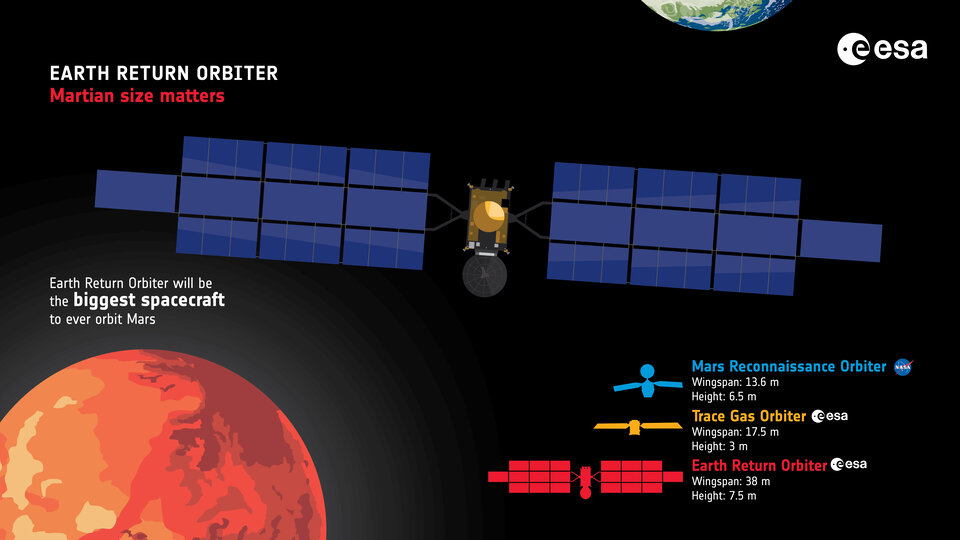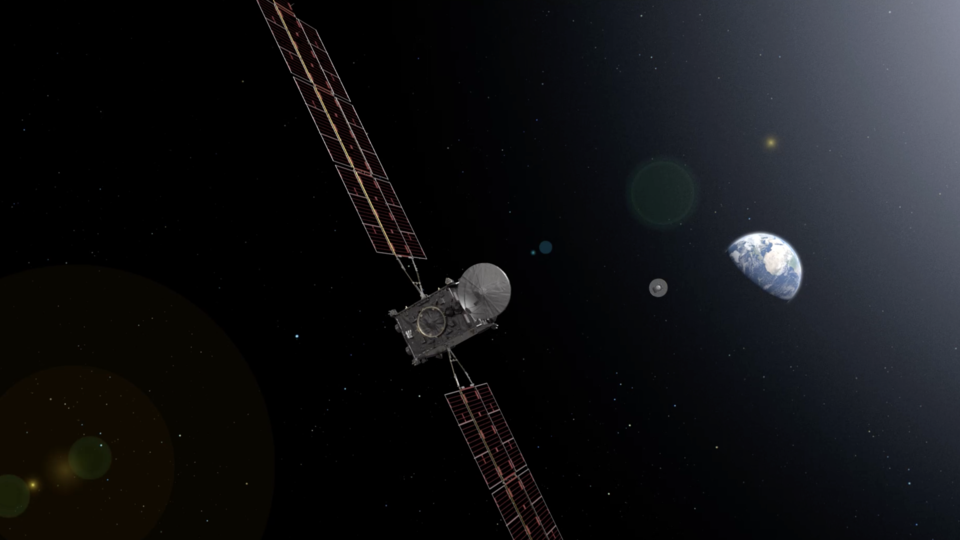The European orbiter would be:
- The first interplanetary spacecraft to make a full round-trip from Earth to Mars.
- The first spacecraft to rendezvous and capture an object in orbit around another planet.
- The biggest spacecraft to orbit the Red Planet so far.

ESA’s Earth Return Orbiter is one of three flight missions making up the Mars Sample Return campaign to bring martian rock, soil and atmospheric samples back to Earth.
In addition to the rendezvous and return mission, ERO would provide critical Mars-Earth communications coverage for the NASA’s Perseverance rover and the Sample Retrieval Lander to deliver the martian samples.
Just as the Apollo Moon samples have powered research for decades, the scientific community would have pristine samples from Mars to study for years to come.
ERO’s round-trip to the Red Planet, as well as its rendezvous with an object launched from the martian surface, paves the way for crewed missions to Mars.
Mission overview at a glance
The ERO mission comprises several mission phases with many technical firsts and in synch with the other elements of the Mars Sample Return campaign.
1. The European spacecraft flies to Mars using the most powerful electric propulsion so far for an interplanetary mission.
2. The Earth Return Orbiter captures a basketball-sized capsule launched from the surface of Mars and filled with a set of samples previously collected by Perseverance.
3. European teams orchestrate the catch in Mars orbit from 50 million km away with the help of ESA and NASA navigation teams.
4. The capsule is safely sealed into NASA’s Earth Entry System to ensure that the precious samples reach Earth’s surface intact for maximum scientific return.
5. Three years after reaching Mars, ERO spends two years to change its orbit and make its way back to Earth.
6. Three days away from Earth, ERO releases the reentry system and places it on a precision trajectory for landing on a predetermined location in our planet.
7. ERO performs a series of maneouvres to enter orbit around the Sun, never to return to Earth.
8. The martian samples are transported to a specialised curation facility, where they are analysed by top scientists and laboratories from around the world.

5 things you need to know
- First round-trip mission to another planet. It would take ERO about two years to reach operational orbit around Mars, one year to do its Mars mission and another two years to leave Mars and return to Earth.
- First spacecraft to capture a man-made object launched from another planet. ERO would demonstrate the first in-orbit rendezvous at Mars.
- Biggest spacecraft to ever orbit Mars. The seven-ton, seven-metre tall spacecraft, is equipped with 144 m² of solar arrays with a span of nearly 40 metres – the largest ever built for interplanetary flight.
- Powerful, hybrid propulsion. The electric propulsion system would be the most powerful ever flown for an interplanetary mission. While ERO would use chemical propulsion to enter Mars orbit, it would rely on solar electric propulsion for the cruise to and from Mars, and for placing itself on an operational orbit.
- Radiation monitor. ERO would measure the total radiation dose received throughout the entire flight. Results would help monitor the health of the spacecraft and provide important information on how to protect human explorers in future trips to Mars.
Quick facts
- Main job: Find and capture a sample capsule in Mars orbit and return it to Earth
- Launch date: No earlier than 2027
- Launch vehicle: Ariane 64
- Launch site: Kourou, French Guiana
- Arrival to Mars: 2029
- Arrival to Mars operational orbit: 2030, 325 km above Mars surface

Tech specs
- Wingspan: 38 m
- Height: 7.5 m
- Solar arrays: 144m²
- Mass: 7 tonnes
- Propulsion System: Hybrid – electric and chemical propulsion

Discussion: one comment
I never really appreciated the enormous size of the MSR Earth Return Orbiter until a direct comparison with the ExoMars Trace Gas Orbiter was illustrated in that infographic… and I thought TGO had quite the width, haha!